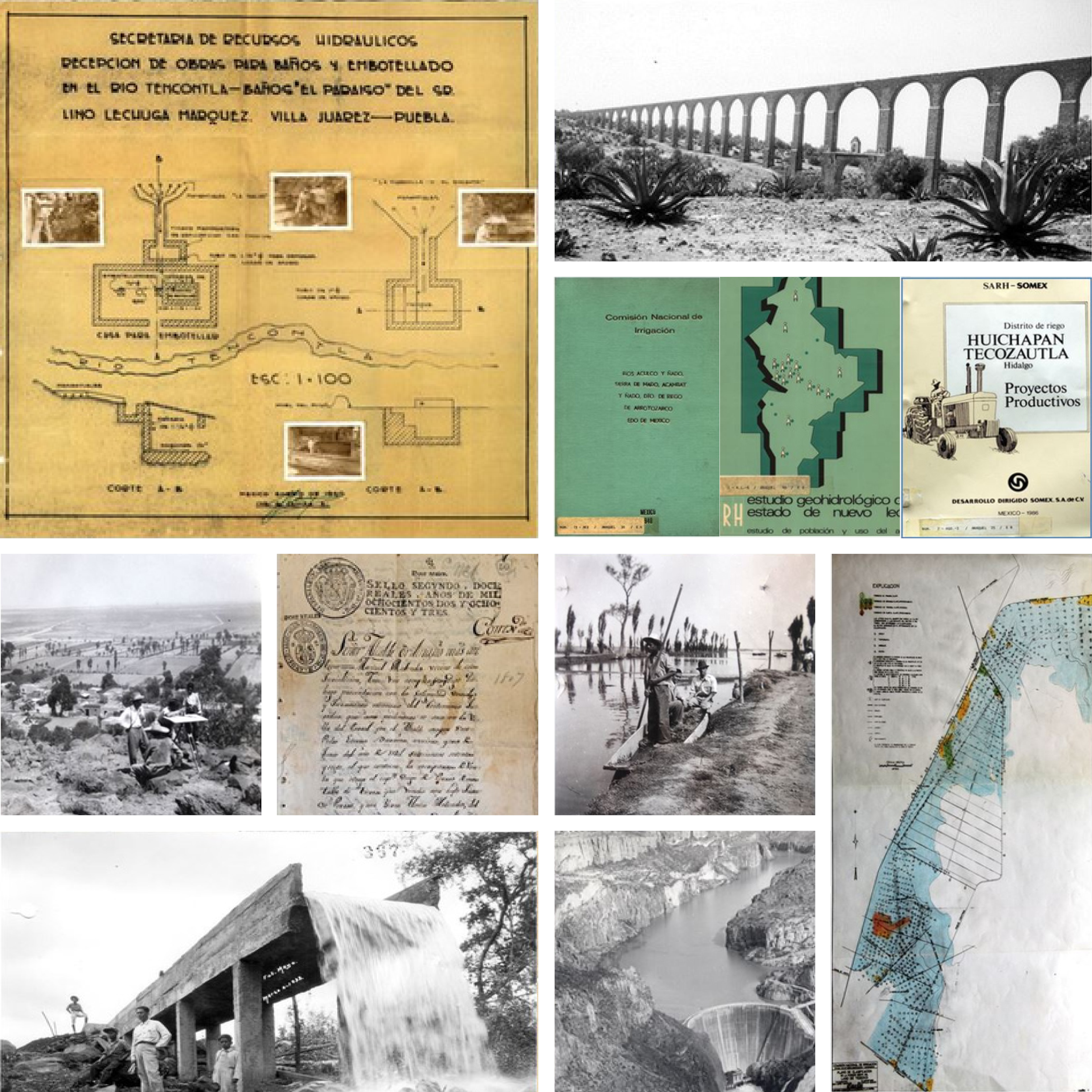
The history of Commission National del Agua (CNA) unfolds the underlying factors of land reform in Mexico. Investments in irrigation, financing of agriculture and ownership regulations delineate the need of the government to exploit resources to gain state power. The hydraulic necessity that Mexico was facing in the twentieth century can be translated into a game of power.
The origins of CNA are found in the Commision National de Irrigation (CNI) in 1929. President Plutarco Elias Calles would be the first to largely finance the irrigation to foster the economic development of Mexico. Up to 1960, the northern states which are the driest, received half of the irrigation investment and the middle class group of farmers arised. Based on the Agraria Law of 1915, the land redistributed to farmers, that developed the ejido system of collective land use, where the members have usufruct rights rather than ownership rights to land. However, although CNI was in charge of setting water prices, it lost its power and an “ability to pay” criteria replaced the previous method. The power came to the local district managers and political leaders.Under this system and due to the fact that large scale farmers gain the privilege of low water rates, the under-pricing of water for agriculture use was introduced. The agricultural investment and in particular irrigation construction faced a huge drop.
The decline of the investments, due to the lack of ability to cover the expenses by charges led to a financial crisis and was criticized by Secretaria Recursos Hydraulicos (SRH) that replaced in 1946 the CNI. A 25 year water resource plan was introduced, which led to the concentration of irrigated land in the large scale farmers and subsequently to a difficulty in increasing charges. In the 70s the priority was given to maintenance rather than system expansion. During the oil boom, President Lopez Portillo decided to increase subsidies for agriculture, including water cost subsidies. However, the decline in charges lead to severe damage to physical structures and a lack of investment.
Through the “construction oriented” Ministry of Agriculture and Hydraulic Resources, resource fees were established for extracting water, but agriculture and the provision of drinking water to small rural communities remained exempt of the fees. In 1989, CNA was founded and the irrigation authority was separated from the agriculture Ministry. In 1992, the land redistribution was declared ended, and ejidos were awarded increased right to their land, while later the law authorized ejidatarios to sell their land. The management and financial responsibility for operating and maintaining the irrigation systems has been transferred to user’s associations. However, the transition remains incomplete and where water is still managed by the CNA, users still do not cover total maintenance costs.
← Back to Lexicon
The origins of CNA are found in the Commision National de Irrigation (CNI) in 1929. President Plutarco Elias Calles would be the first to largely finance the irrigation to foster the economic development of Mexico. Up to 1960, the northern states which are the driest, received half of the irrigation investment and the middle class group of farmers arised. Based on the Agraria Law of 1915, the land redistributed to farmers, that developed the ejido system of collective land use, where the members have usufruct rights rather than ownership rights to land. However, although CNI was in charge of setting water prices, it lost its power and an “ability to pay” criteria replaced the previous method. The power came to the local district managers and political leaders.Under this system and due to the fact that large scale farmers gain the privilege of low water rates, the under-pricing of water for agriculture use was introduced. The agricultural investment and in particular irrigation construction faced a huge drop.
The decline of the investments, due to the lack of ability to cover the expenses by charges led to a financial crisis and was criticized by Secretaria Recursos Hydraulicos (SRH) that replaced in 1946 the CNI. A 25 year water resource plan was introduced, which led to the concentration of irrigated land in the large scale farmers and subsequently to a difficulty in increasing charges. In the 70s the priority was given to maintenance rather than system expansion. During the oil boom, President Lopez Portillo decided to increase subsidies for agriculture, including water cost subsidies. However, the decline in charges lead to severe damage to physical structures and a lack of investment.
Through the “construction oriented” Ministry of Agriculture and Hydraulic Resources, resource fees were established for extracting water, but agriculture and the provision of drinking water to small rural communities remained exempt of the fees. In 1989, CNA was founded and the irrigation authority was separated from the agriculture Ministry. In 1992, the land redistribution was declared ended, and ejidos were awarded increased right to their land, while later the law authorized ejidatarios to sell their land. The management and financial responsibility for operating and maintaining the irrigation systems has been transferred to user’s associations. However, the transition remains incomplete and where water is still managed by the CNA, users still do not cover total maintenance costs.
← Back to Lexicon
Segretaria Recursos Hydraulicos (SRH) - Ministry of Hydraulic Resources, 1946
Sources: Archivo Histórico y Biblioteca Central del Agua, http://sic.gob.mx/ficha.php?table=fototeca&table_id=73
Sources: Archivo Histórico y Biblioteca Central del Agua, http://sic.gob.mx/ficha.php?table=fototeca&table_id=73
- Karl August Wittfogel, “Oriental Despotism: A Comparative Study of Total Power” Yale University Press, 1957
- Lew Mumford, “The City in History: Its Origins, Its Transformations, and Its Prospects”, Harcourt, Brace & World: New York, 1961
